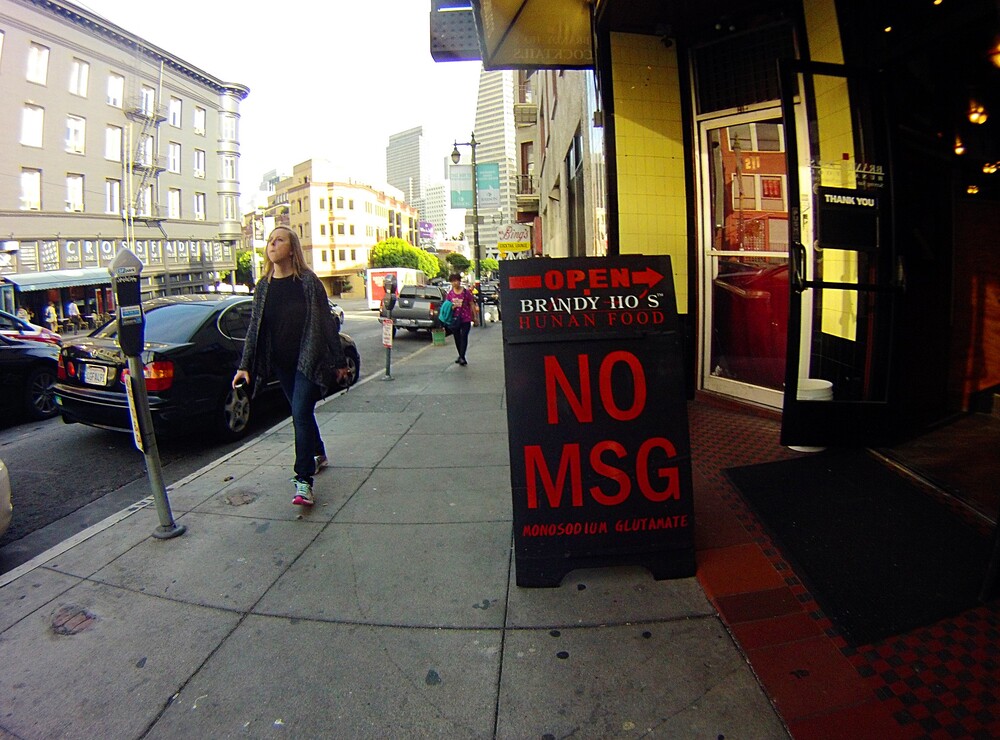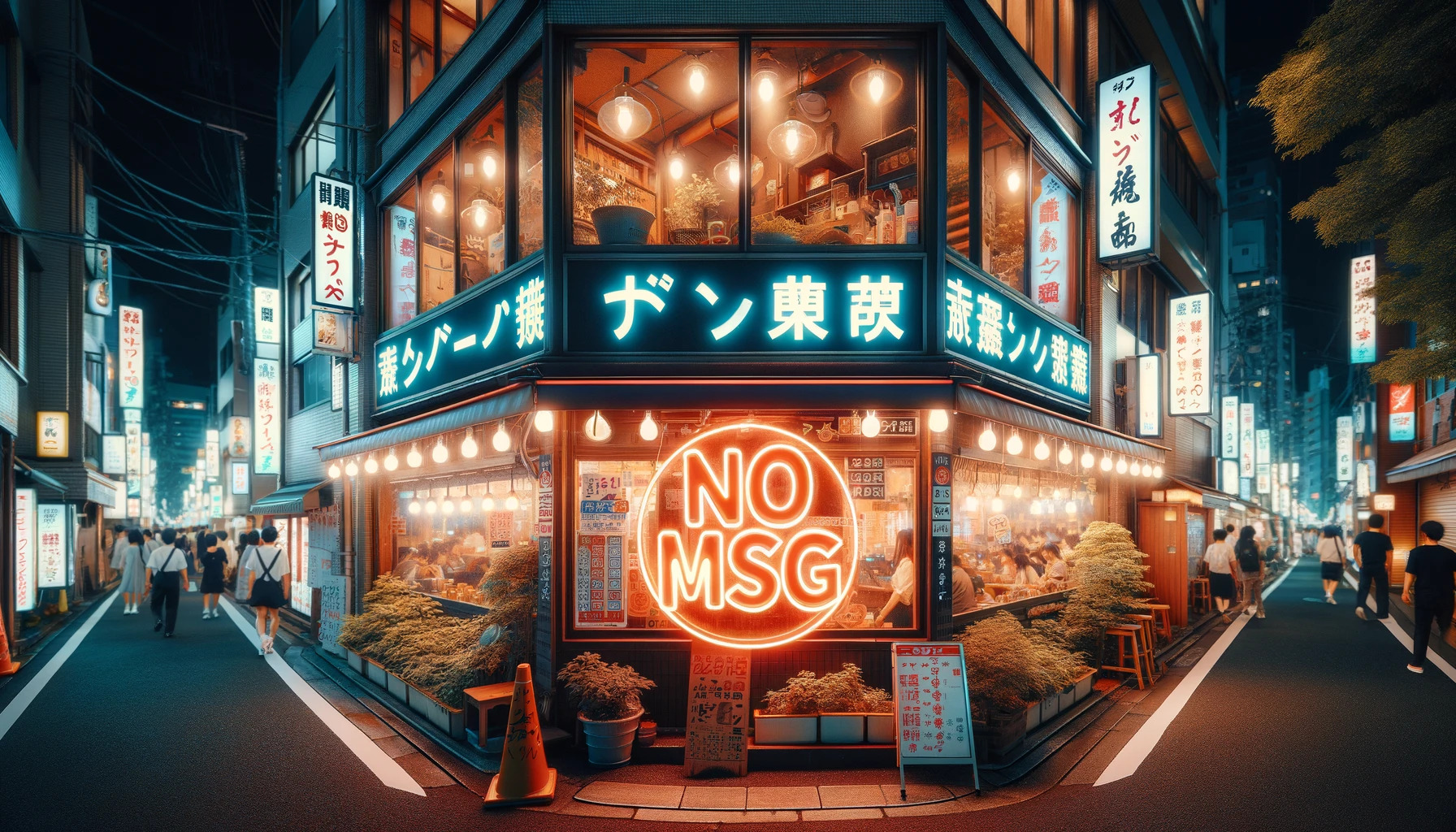Part of the series The Story of MSG
The Story of MSG: Controversy
How MSG went from hero to zero, with the help of a doctor’s note
Previously in this series: Adoption, or how MSG conquered the world – starting in Japan.
In the 1960s, it seemed like MSG was going to take over the world. It had become a kitchen-cupboard staple across Asia. People in the US and Europe were eating it every day in everything from sausages to soup. Asian restaurants were using it to add depth of flavour to broths and sauces made with western ingredients. It was an ingredient that seemed to represent the future of food: modern, precise, reliable and predictable.
And yet the 1970s saw a backlash against MSG. Restaurants and food manufacturers began to boast of not using it, where a few decades earlier they’d been proud of the opposite. People became convinced that they were allergic to it. The phrase “Chinese restaurant syndrome” became common currency. How did things go so wrong?

The conventional story traces the backlash to 4 April 1968, when the New England Journal of Medicine published a letter from a Cantonese-American doctor, Dr. Robert Ho Man Kwok. Whenever he ate at a Chinese restaurant in the US, Kwok said, he felt “a strange syndrome” that gave him “numbness in the back of the neck… general weakness, and palpitation.” He suggested several potential causes worthy of exploration, including cooking wine and the overuse of salt, but one of Kwok’s speculations stuck in the public consciousness: that this “Chinese restaurant syndrome” might be caused by “the monosodium glutamate used to a great extent for seasoning in Chinese restaurants.”
Kwok’s letter was just that: a letter, rather than a scientific study; an idle thought, four paragraphs long, published alongside many other similarly dashed-off speculations. And, as idle thoughts go, it doesn’t stand up to much scrutiny. For a start, MSG had been used for decades in similar quantities in lots of non-Chinese dishes without anyone complaining of the symptoms Kwok identified. And second – as the great food writer Jeffrey Steingarten put it – if there was such a thing as “Chinese restaurant syndrome”, why didn’t everyone in China have a headache?
And yet, despite all that, the letter wasn’t met with scepticism. It sparked a credulous flurry of research and further correspondence. Newspapers leapt on it, often with mocking headlines like “Kwok’s Queeze” and “Chinese Food Make You Crazy? MSG is Number One Suspect”. People wrote to the NEJM corroborating Kwok’s symptoms and proposing a bewildering array of new ones, few of which overlapped. Researchers set out to prove the existence of “Chinese restaurant syndrome” with now-discredited scientific studies, some of which were truly odd: one doctor, John Olney, injected mice with almost 1% of their bodyweight in MSG, then claimed that they were “lethargic” and that their coats “lacked sleekness”. In response, the FDA announced it was to re-investigate the safety of MSG, and prominent food manufacturers pledged to remove it from their products. The scare had begun, and with lasting effects: by 2016, 42 per cent of Americans said they actively avoided MSG. It took less than a year for news articles to crop up outside of the US, spreading to the UK, Australia, Canada and elsewhere in the English-speaking world. The scare became global.
Why did Kwok’s letter, sincere as it apparently was, set off such a furore? The answer is timing. Kwok unwittingly published his letter into a culture that was primed to find a scandal. It drew to the surface and combined two cultural strands: one ancient, one recent; one ugly, one more well-intentioned.
The first cultural thread that Kwok inadvertently pulled at was the nascent environmentalist movement, which had become particularly invigorated in the years following the publishing of Rachel Carson’s seminal Silent Spring in 1962. Carson’s book had revealed that the use of synthetic pesticides such as DDT were decimating the natural environment and causing human illness. In 1967, the year before Kwok’s letter, the Environmental Defense Fund was established in an effort to establish the human right to a clean environment; this campaigning was to lead to the creation of the Environmental Protection Agency by Richard Nixon in 1970.
Scandals like DDT and Agent Orange, and the nature-first ecological approach outlined by Carson, fostered in the general public an understandable suspicion of the chemical industry. Where previously chemistry had represented progress, now its reputation was tainted. The word “chemical” itself became a curse word; the scientific optimism of the first half of the twentieth century gave way to a scepticism of anything artificial. Nowhere was that scepticism more pronounced than in people’s diets: the hippie and organic movements emphasised diets rich in natural, whole foods and organic produce, and frowned upon the idea of putting “chemicals” into your body. MSG is a perfectly white, crystalline powder that very clearly does not occur in nature, with a scary-sounding scientific name. To a population increasingly sympathetic to these new ideas, it was easy to lump MSG in with, say, DDT, and therefore easy to imagine it as the cause of a phantom illness.
The second, darker strand was plain, old-fashioned racism. Anti-Asian sentiment has been a periodically malign force in US culture, always smouldering and occasionally sparking into violence and discrimination. It flared up in the late 19th and early 20th centuries, when white workers felt threatened by Chinese railway workers; the response included everything from lynchings to the passage of sweeping immigration legislation that explicitly banned Chinese people from the US. In World War II, Japanese Americans were suspected of disloyalty and so were interned en masse in concentration camps. And following the Chinese revolution and Korean War in the 1940s and 1950s, many Chinese Americans were vilified as Communists as part of the Red Scare.
Kwok’s letter was published at another flashpoint for anti-Asian sentiment, as the Vietnam War raged on – the US’s third war against Asian enemies in 25 years. And 1968 was of one of the lowest points of the Vietnam War from an American perspective. In January, the Tet Offensive had caught US and South Vietnamese forces off-guard, leading to the deaths of 5,000 South Vietnamese and 4,000 US soldiers. Public support for the war was flagging, and led to a fresh upsurge in that always-present anti-Asian racism. This was directed first at Vietnamese refugees, but spilled out into a broader suspicion of Asian people, their culture and their food.
Chinese food in the US of the 1960s was alien and unfamiliar, the butt of jokes about everything from consuming dogs to poor food hygiene. The idea that it could contain some strangely toxic ingredient that gave people headaches was received all too eagerly by journalists and the mainstream culture.
Cultural conditions meant that people believed that Chinese restaurant syndrome existed. And if you eat food expecting it to cause you illness, the stress of that anticipation tends to show up with the same symptoms people ascribe to “Chinese restaurant syndrome”: tightness in the chest, flushed cheeks, headache. Combined with the fact that Westerners tend to overdose on deep-fried pork balls, sugary sauces and alcoholic drinks at Chinese restaurants, it’s easy to see how people who read about the syndrome could convince themselves they suffered from it.
As a point of comparison, it’s hard to think of a combination of ingredients richer in free glutamates than tomatoes and Parmesan cheese, and yet we’ve never thought about blaming lasagne or bolognese for “trattoria syndrome”. That’s because consciousness of MSG emerged at a time when Italian cuisine was far more integrated into American and European diets, and when Italian immigrants were far more integrated into American and European society. And it’s because the glutamates in those dishes feel more “natural” than Asian dishes with MSG added, even though they’re chemically identical. Italian food fell foul of neither the environmental movement’s suspicion of “chemicals” nor the general hostility to unfamiliar foreign food. And so nobody went to Italian restaurants expecting to suffer symptoms – and so nobody did.
In the 56 years since Kwok’s letter, MSG has become likely the most well-tested and deeply researched of all food ingredients. We’ve discovered that MSG as a seasoning doesn’t differ chemically from the MSG that occurs naturally in virtually all food, and that your body doesn’t respond any differently to MSG seasoning than it does to the MSG in, say, a walnut. It’s perfectly safe, and “Chinese restaurant syndrome” doesn’t exist. As science writer Harold McGee says:
“If you love tomatoes, one of the reasons you love them is that they contain much more MSG in them, naturally, than other vegetables. Aged parmesan cheese and aged beef have some of the highest levels of MSG of any food we’re going to eat, and that’s part of what makes them so delicious… In the case of MSG, the record is clear. There is no evidence that MSG causes the symptoms of the ‘Chinese restaurant syndrome’.”
And yet the myth perseveres, stubbornly refusing to die. 42 per cent of people reject something that could make their food taste better for reasons that they barely understand – and without realising that it all dates back to one fateful letter, back in 1968, that struck in the wrong place at the wrong time.
Next, the final part of the series: Redemption, or how a new generation of chefs have rediscovered and repopularised MSG.

Add a comment